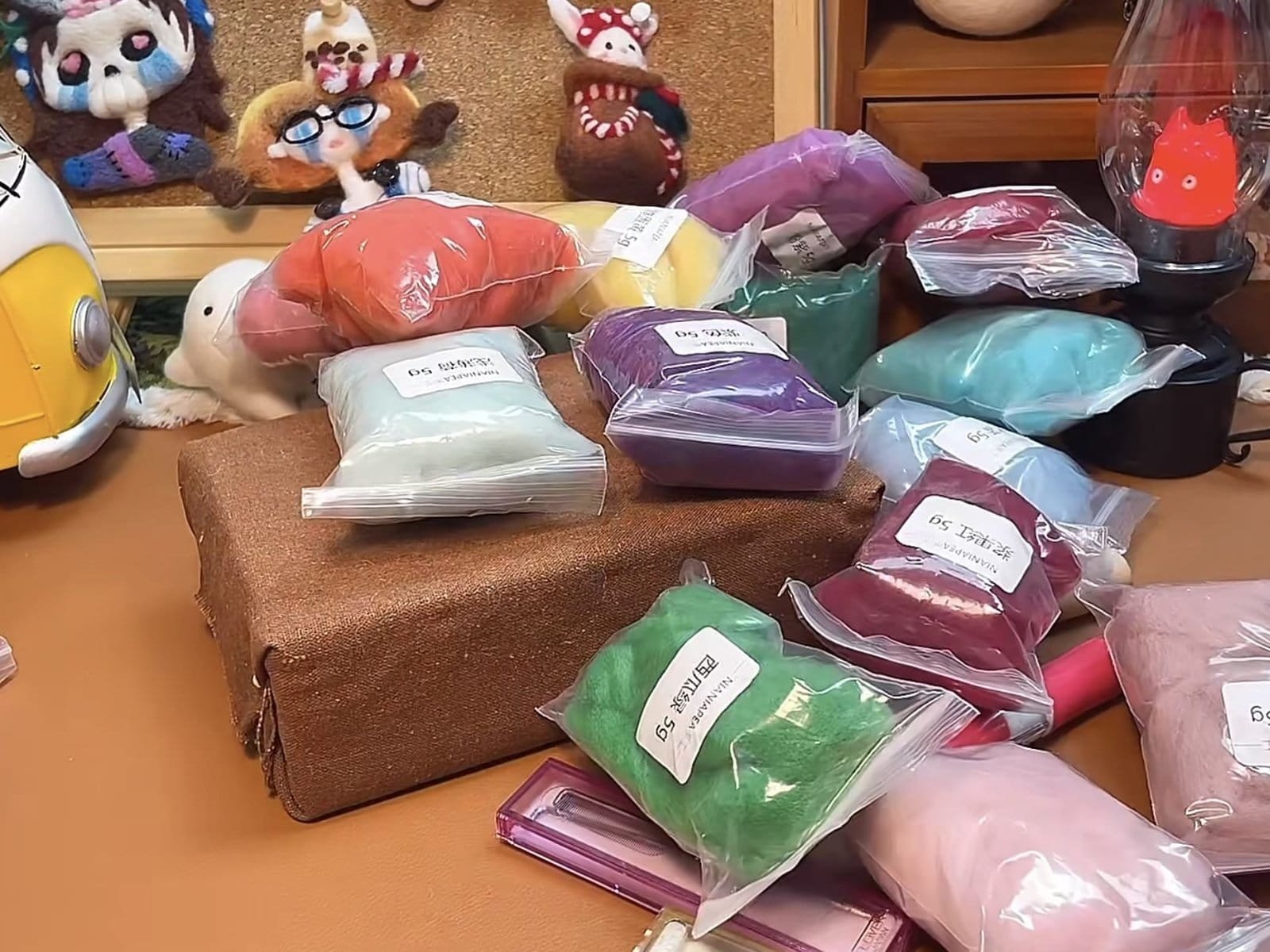The Complete Guide to Tidying Up Needle Felting: From Process to Preservation
Needle felting is an incredibly rewarding craft, but like many art forms, it can get messy. Whether you’re dealing with fuzziness on your finished piece, dust on your equipment, or fibers all over your workspace, this guide will help you maintain a clean and efficient environment from start to finish. Learn how to keep your needle felting process smooth and preserve your creations in pristine condition.
Achieving a Smooth, Professional Finish
Choosing the Right Wool
The wool you choose can greatly affect the smoothness of your finished piece. Romney wool, for example, felts quickly and becomes dense with minimal fuzz. Jacob wool, while also suitable, requires more time to reach a smooth texture. For particularly fine work, Merino wool offers incredible softness, but it must be handled with care to avoid visible holes.
Perfecting Your Technique
Achieving a smooth finish is a gradual process. As one expert puts it, “You can’t just grab your wool and stab it haphazardly, hoping for a smooth result.” The key is to start dense. Your wool should feel solid, not squishy, by the time you’re done. The more compact you make it from the beginning, the smoother your finished piece will be.
Essential Needle Selection
Use different needle sizes depending on the stage of your project:
- 36 gauge needles: Best for core shaping.
- 38 gauge needles: Work well for finer details.
- For the smoothest finish, try specialized 42 gauge triangular needles or 40 gauge twisted/spiral needles.
Always stab straight up and down—not side to side—to prevent needle breakage and achieve even results. For extra-smooth surfaces, shallow, angled stabbing can help refine the texture.
Resolving Persistent Fuzziness
If your finished piece still has unwanted fuzziness:
- Use finer needles to gently tuck in stray fibers.
- Carefully trim or tweeze stubborn fuzzies using small scissors or thread snips.
- For dense pieces, an electric shaver can help remove fuzz (ensure it’s fully felted before trying this).
- Apply a cool iron to flat pieces to smooth out fuzzies.
- Some artists use a diluted glue/water mixture, though results may vary.
Cleaning Your Needle Felting Equipment
Maintaining Needle Felting Foam/Mats
Felting mats are essential, but they can get covered in fibers. The best way to clean them is with a lint roller:
- Roll it across the foam to pick up fibers.
- Remove larger wool chunks manually.
- Change the lint roller sheet as needed.
- Clean regularly to prevent fibers from contaminating your next project
Caring for Your Felting Needles
Taking care of your needles ensures both safety and long-lasting performance:
- Keep your craft space organized to prevent accidents.
- Use a light grip when holding your needle—remember, “it’s all in the wrists, not the biceps.”
- Always pull the needle out the same way you insert it to avoid damage.
- Consider using a needle holder for better control, especially when working for extended periods.
Preserving Completed Needle Felted Items
Optimal Storage Conditions
Wool felt thrives in a clean, dry environment. Moths and other pests are drawn to dirt, so store your felted items on covered shelves in a well-lit room to avoid attracting them. For display pieces, glass cases can protect from dust accumulation while showcasing your work.
Effective Cleaning Methods
Different cleaning techniques are suited to different levels of dust or wear:
- For light dust: Gently pat the piece.
- For stubborn dust: Place your felt in a pillowcase and lightly vacuum through the fabric.
- For solidly felted pieces: Use scotch tape (not packing tape) to lift dust without damaging the fibers.
- For a more thorough cleaning: Gently wipe the surface with a damp cloth.
Addressing Common Issues
If your felted piece becomes disheveled from handling:
- Re-felt loose fibers with a needle.
- Trim stray fibers with scissors.
For spills or liquid damage:
- Rinse the piece under cool running water (without soap) and let it air dry in the shade to avoid discoloration.
For yellowing due to sunlight:
- Either redo the color layers or accept the aging as part of the piece’s character.
In case of moth infestations:
- Bake the felt at a very low temperature or place it in the freezer to kill any insects. Be aware that different armature materials may react differently to these treatments.
Maintaining Neat Edges and Shapes
One challenge with needle felting is keeping edges crisp and clean. To maintain neat, firm edges, use your felting needle to “draw” the desired shape, carefully felting the edges to prevent unwanted wisps. For detailed elements like animal ears, flower petals, or small accents, specialized techniques can help ensure a neat finish without rough or uneven edges.
Conclusion
With the right techniques and proper maintenance, needle felting can be a tidy and enjoyable craft that produces stunning, long-lasting creations. By following these tips throughout your felting process and caring for your finished pieces, you’ll not only keep your workspace organized but also ensure that your works of art stay in excellent condition for years to come.
